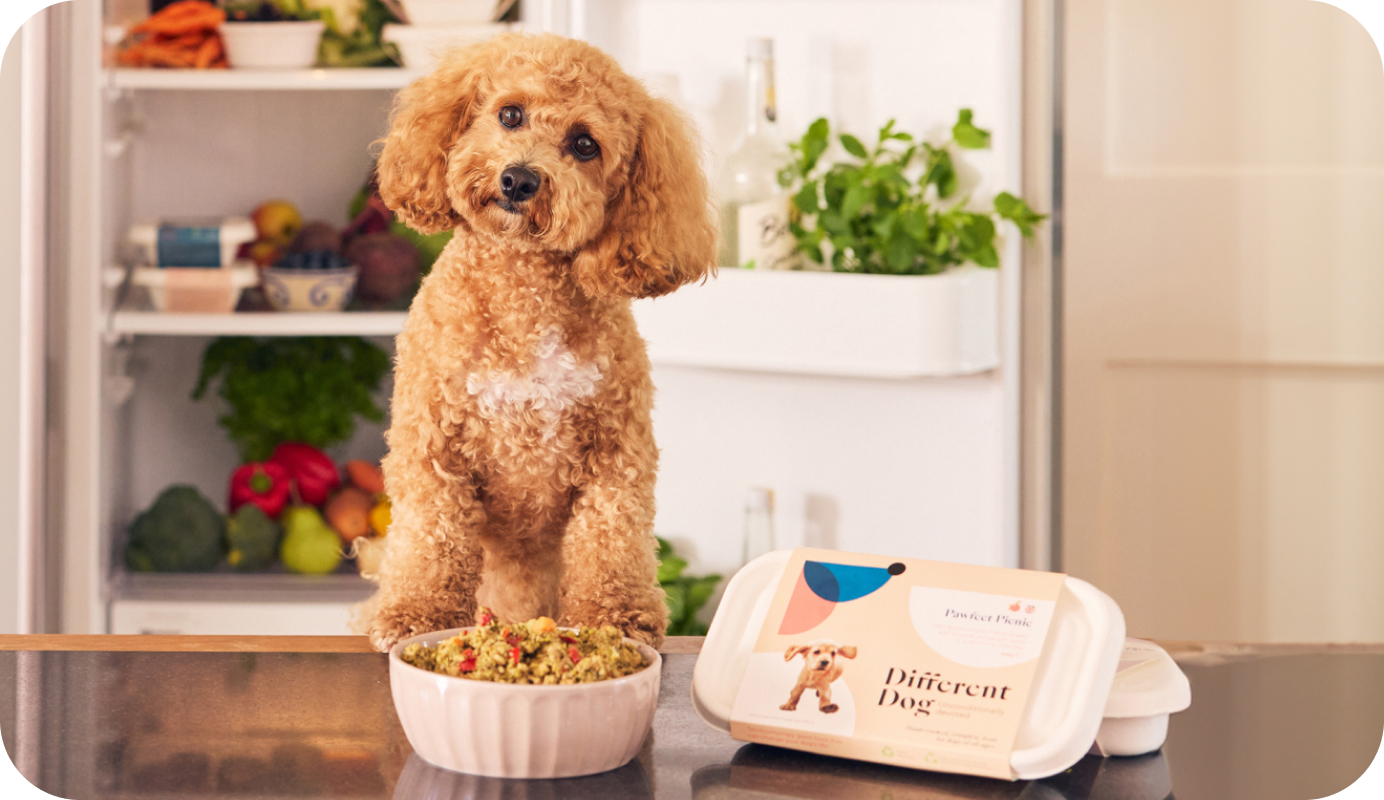Keep your dog comfortable, healthy and thriving during autumn with expert advice from our canine experts.
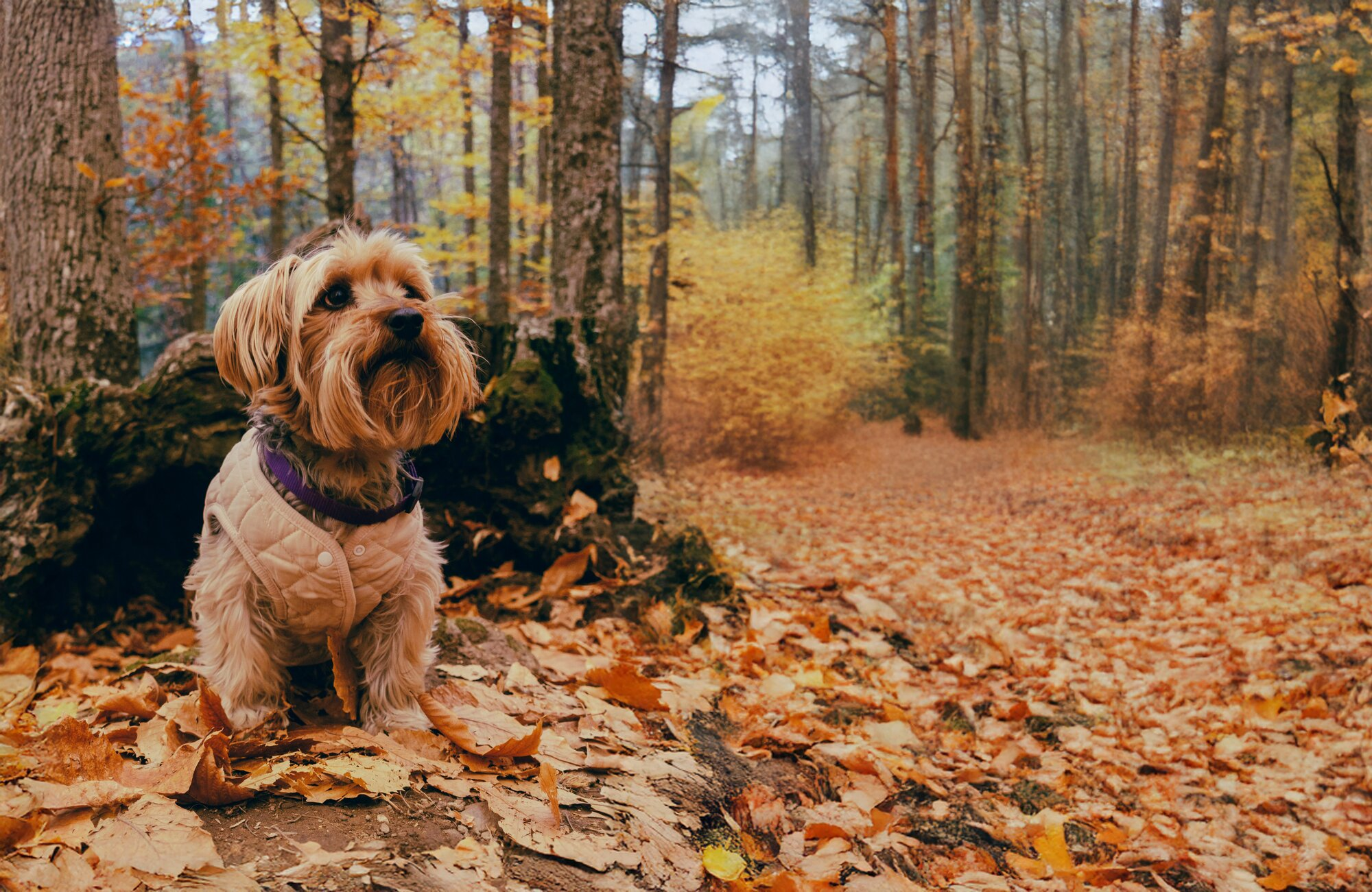
Our food is approved & verified by our in-house veterinarian, canine nutritionist and behaviourist.
Autumn brings a magical transformation – golden leaves carpeting our countryside walks, crisp mornings perfect for exploring local parks, and those cosy evenings that make us want to snuggle up with our four-legged friends. But as any experienced dog owner knows, our unpredictable autumn weather can present unique challenges for our pets. From adjusting to the shift in daylight hours to navigating new outdoor hazards during those muddy woodland walks, autumn requires thoughtful preparation to keep your dog happy and healthy.
"The transition into autumn can be particularly challenging for dogs," explains Bianca, Different Dog's in-house canine nutritionist. "With rapidly shortened days and changing weather patterns, it's important that dog owners understand how to support their pets through this period."
Whether you're walking through city parks, exploring the countryside, or enjoying woodland rambles, this comprehensive guide will help you navigate autumn's unique challenges while discovering how the right nutrition can make all the difference to your dog's seasonal wellbeing.

Seasonal skin and coat care – protecting your dog from autumn weather challenges

Autumn walk safety – identifying hazards like conkers, mushrooms, and visibility risks

Daylight adjustment strategies – helping your dog cope with shorter days and clock changes

Halloween safety tips – keeping your dog calm and secure during spooky season

Mood and nutrition support – combating seasonal blues with the right foods

Warming comfort foods – the benefits of bone broth and goat's milk

Fresh food advantages – how quality nutrition supports seasonal transitions
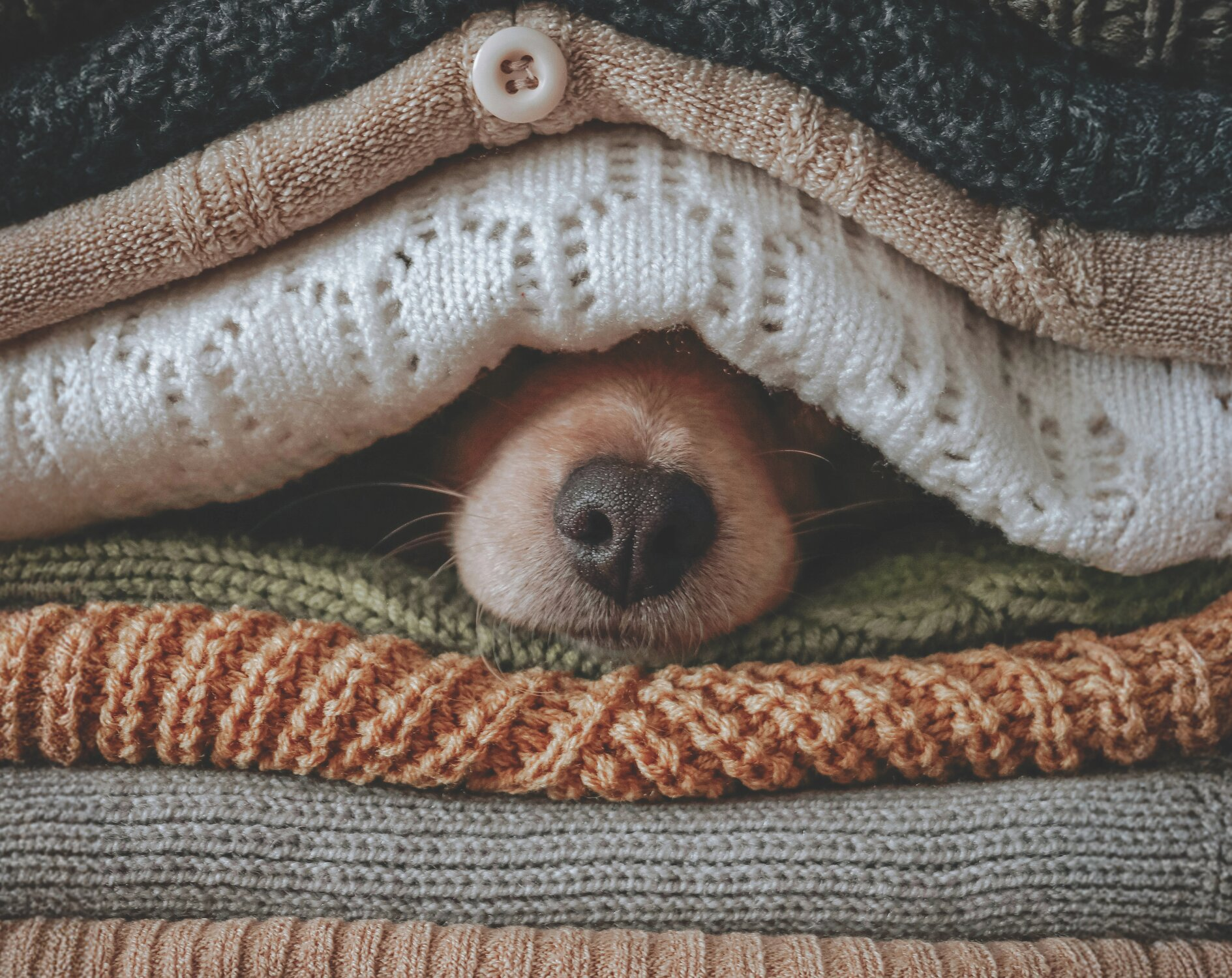
Dogs are creatures of habit who thrive on routine and predictability. Seasonal changes can disrupt their established patterns in several ways:

Daylight variations affect their natural circadian rhythms

Temperature fluctuations impact their comfort and energy levels

Weather changes can affect their willingness to exercise

Indoor heating creates different environmental conditions
"Dogs are sensitive to environmental changes," notes Diane, our canine behaviourist. "The combination of changing daylight hours, fluctuating temperatures, and altered routines can impact their wellbeing, which is why gradual preparation is so important."
Many dogs may show signs of seasonal adjustment challenges, making proper autumn preparation crucial for pet owners.
The shift between warm indoor heating and cool autumn air can dry out your dog's skin, creating one of the season's most common health challenges. The combination of wet outdoor conditions and heated indoor environments can lead to:

Dry, flaky skin from heated indoor air

Wet coat issues from frequent damp walks

Matted fur from moisture and debris

Paw pad irritation from wet surfaces and road treatments

Dry your dog thoroughly after walks – invest in absorbent towels

Check paws daily for cuts, irritation, or embedded debris

Brush regularly to prevent matting and distribute natural oils

Monitor for skin changes and consult your vet if concerned
"Skin and coat health starts from within," explains Bianca, our canine nutritionist. "A balanced diet with quality ingredients will help support your dog's skin during challenging weather conditions."
Fresh food diets typically contain:

Omega-3 fatty acids from fish, which may support skin health

Quality proteins that provide building blocks for healthy skin and coat

Natural vitamins and minerals that support overall health

Higher moisture content which can contribute to hydration
As walks get darker and autumn progresses, staying alert for seasonal hazards becomes crucial:
Common Autumn Walk Hazards:
Conkers: Conkers (horse chestnuts) contain saponins and can cause vomiting, diarrhoea, and blockages. These are commonly found in parks and woodland areas during autumn and are toxic to dogs and can cause serious health issues.
Wild Mushrooms: Many wild mushroom species are toxic to dogs. Since identification can be extremely difficult, it's safest to prevent your dog from eating any wild mushrooms out and about. Some species can be fatal even in small quantities.
Don't forget - edible mushrooms found in your local supermarket or green grocers (and in our recipes) are safe for dogs to consume and have a host of health benefits too!
Fallen Leaves: while not toxic, wet fallen leaves can:

Create slippery surfaces

Hide other hazards underneath

Cause mild stomach upset if eaten in large quantities
Road Treatments: Early winter preparations like salt and grit can irritate paw pads.
With daylight hours reducing significantly, visibility becomes a major safety concern:

Reflective gear – harnesses, leads, and clothing help drivers see you and your dog

LED lights – collar lights or clip-on lights increase visibility

Bright colours – fluorescent clothing works well in low light

Torches or headlamps – help you see hazards on the path

Familiar routes – stick to well-known paths during darker hours
"Visibility is crucial for safety during darker months," advises Alison. "Investing in proper lighting and reflective equipment is essential for keeping both you and your dog safe."
While the spooky season is fun for us; Halloween presents unique challenges for dogs, from toxic treats to overwhelming experiences.
Halloween Safety Essentials:
Toxic Halloween Treats: Many Halloween sweets are dangerous for dogs:

Chocolate contains theobromine, which is toxic to dogs

Xylitol (artificial sweetener) can cause dangerous drops in blood sugar

Raisins and grapes (in some sweets) are toxic to dogs

Keep all Halloween treats securely stored away from pets
Decoration Safety:

Small items can present choking hazards

Candles should be kept away from curious pets

Electrical decorations need secure, chew-proof cording
"Halloween can be overwhelming for many dogs," explains Diane. "The combination of constant visitors, unusual sounds, and disrupted routines can cause significant stress."
Creating a Calm Environment:

Safe space – set up a quiet room away from the front door

Familiar items – include their favourite bed, toys, and blankets

Sound management – use background music to mask doorbell sounds

Routine maintenance – try to keep feeding and walk times consistent. You can also offer calming treats to help comfort them.
Costume Considerations:

Only dress dogs who are comfortable with clothing

Ensure costumes don't restrict movement or breathing

Introduce costumes gradually before the event

Watch for signs of stress or discomfort
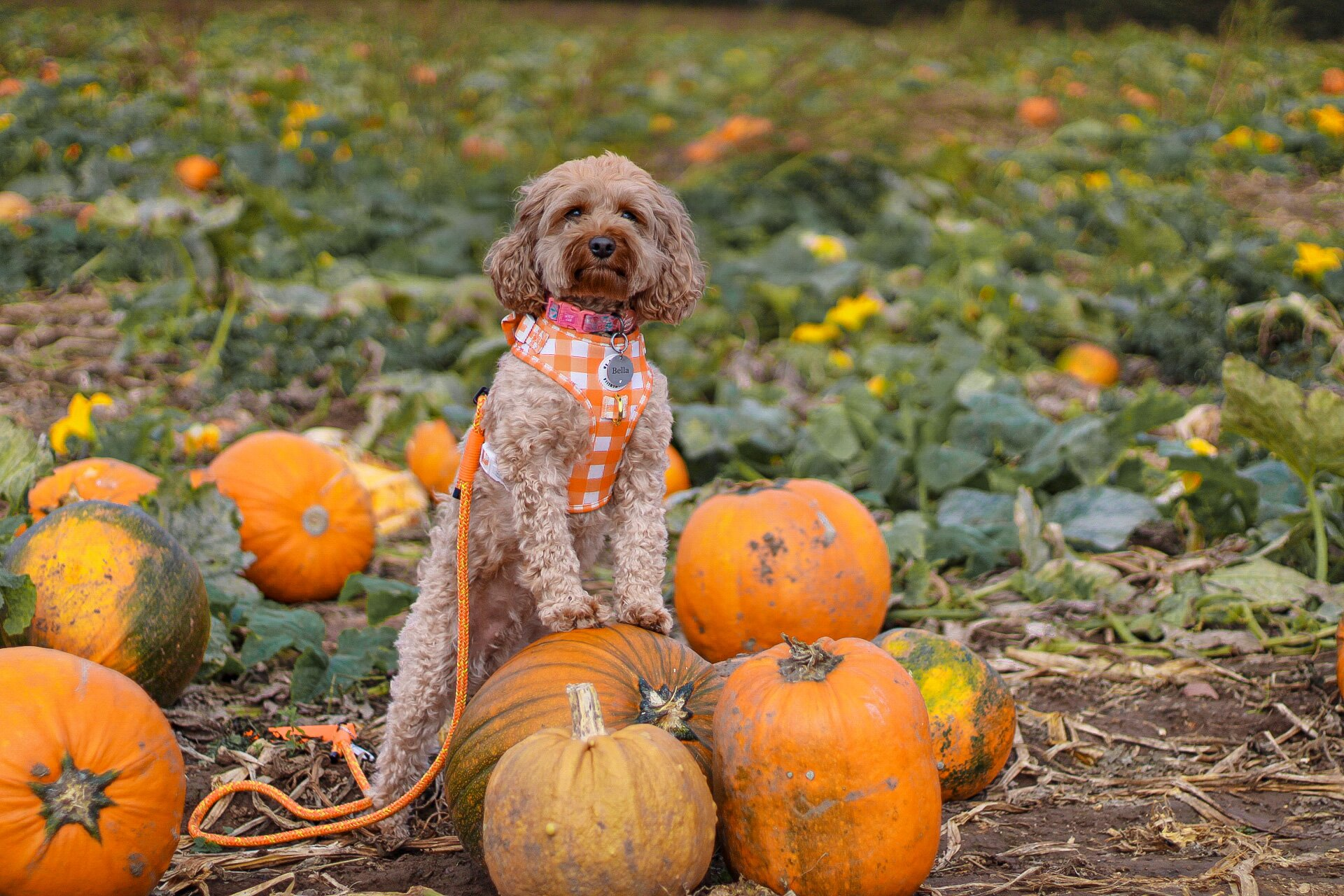
Photo credit: @bellathecavapoo20
The clock change and reducing daylight hours can significantly impact your dog's routine.
Managing the Clock Change Successfully:
Gradual Transition: The time change can disrupt your dog's internal schedule. You can ease the transition by gradually shifting their mealtimes and walks by 10-15 minutes each day leading up to the change. This helps their body clock adjust naturally.
After the change, maintaining a consistent schedule for feeding, walks, and bedtime will help your dog feel secure and settled.
Maximising Natural Light
"Dogs benefit from natural light exposure," explains Diane. "Morning walks can be particularly beneficial for helping regulate their daily rhythm."
Make morning walks a priority when possible – even brief exposure to natural light can be beneficial for your dog's wellbeing.
Choose a walking routine with more open areas as they typically offer more light than enclosed spaces, like woodlands.

Photo credit: @ronnieinthemountains
Proper nutrition plays an important role in supporting your dog's overall health during seasonal transitions.
Nutrients That May Support Wellbeing:

B-vitamins support nervous system function

Omega-3 fatty acids may help with mood and skin health

Quality proteins provide essential amino acids

Complex carbohydrates offer steady energy
"Good nutrition forms the foundation of health," notes Bianca. "A balanced, fresh diet will help support your dog's overall wellbeing during challenging seasons."
As temperatures drop, warming foods can provide both nutritional and comfort benefits.
Bone Broth Benefits:

Hydration support – especially when dogs may drink less cold water than when it’s warmer

Palatability – can encourage eating in dogs with reduced appetite

Joint support – contains natural collagen

Comfort – provides warming satisfaction. A warm broth for example supports the removal of internal dampness, which is believed to be linked to candida overgrowth common in the gut, especially in winter.
Goat's Milk Advantages:

Digestive support – contains natural probiotics

Palatability – many dogs enjoy the taste so a great addition to any fussy dog’s diet

Protein boost – provides additional nutrition

Easier digestion – generally better tolerated than cow's milk

Can be served warm –
- to offer a comforting and nutritional treat
"These additions can work well as part of a balanced diet," explains Bianca. "They provide both nutritional benefits and boost immunity whilst offering a tasty, comforting treat during colder weather."
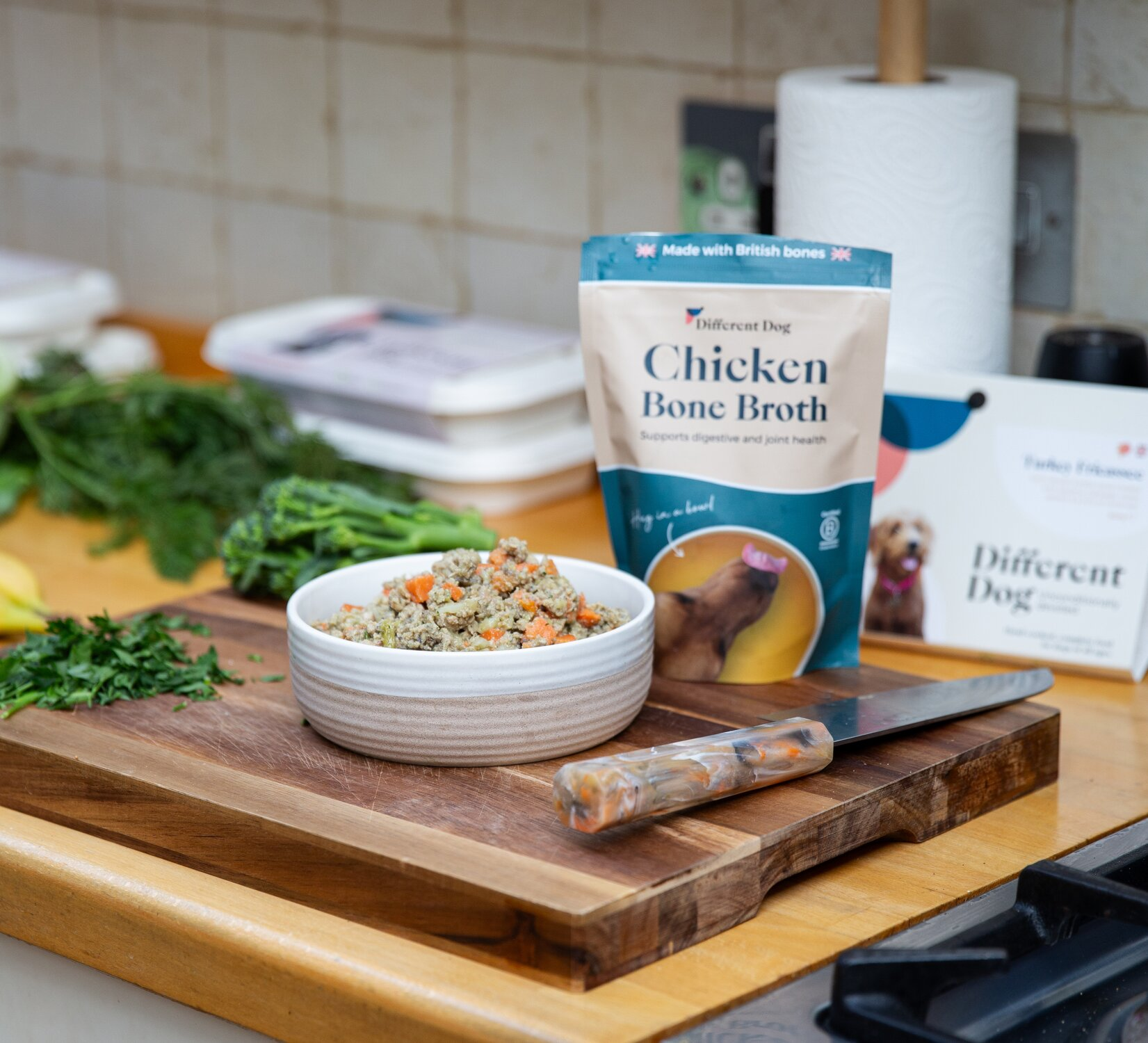
Seasonal changes can place additional demands on your dog's body, making good nutrition particularly important.
Fresh Food Advantages:

Nutrient Quality: Fresh ingredients retain their nutritional value better than heavily processed alternatives.

Digestive Health: Fresh foods support beneficial gut bacteria, which plays a role in overall health.

Hydration: Fresh meals contain natural moisture, helping to keep your dog hydrated.

Diversity: A varied, fresh diet gives dogs a mix of nutrients and keeps their gut healthy, helping them stay strong, happy, and resilient

Customisation: Fresh food plans can be adjusted for individual needs.
"A healthy digestive system is important for overall wellbeing," emphasises Bianca. "Fresh, varied diets may help support the beneficial bacteria that play important roles in digestion and immune function."
While individual results vary, many pet owners report positive changes when switching to fresh food diets.
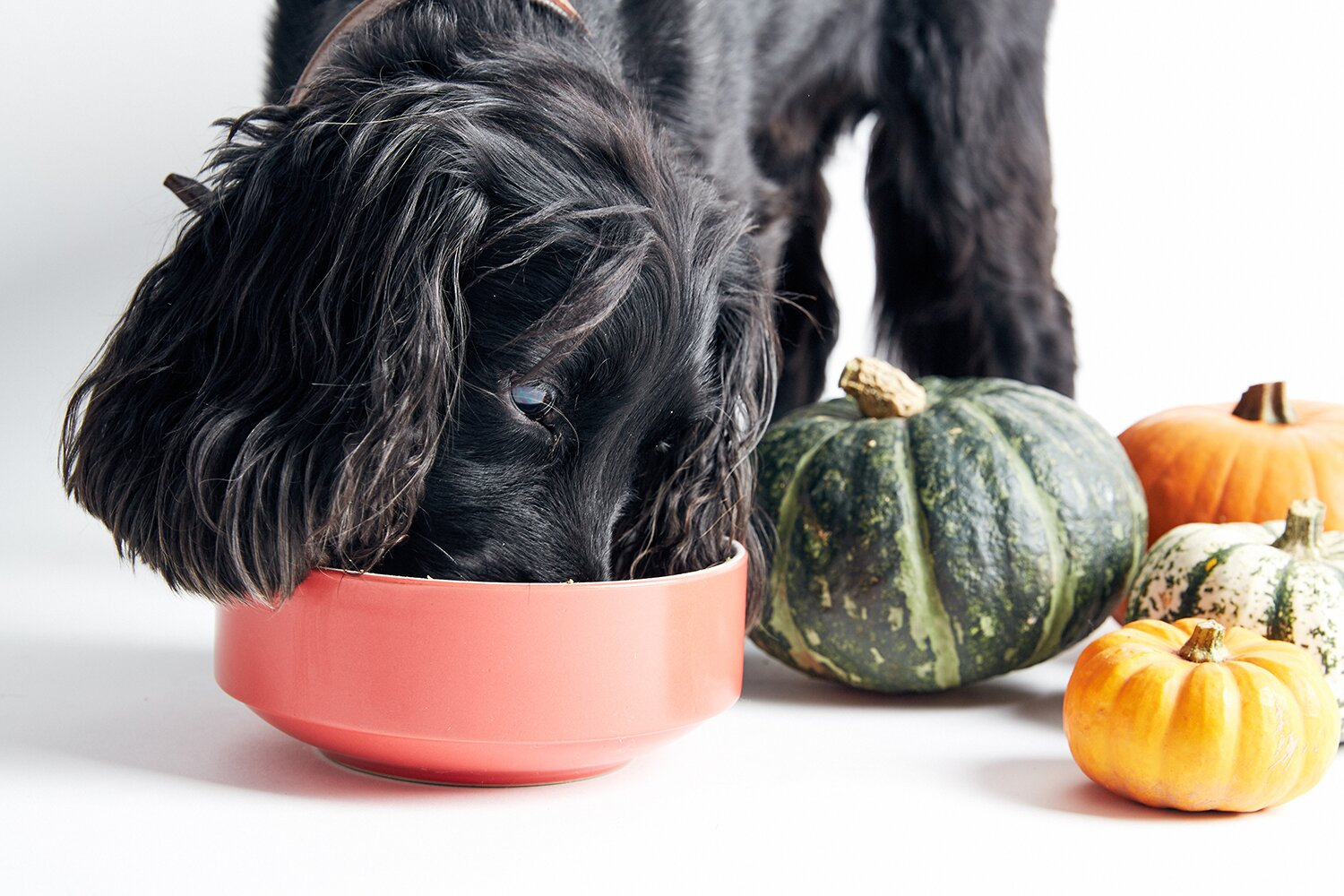
As we settle into the season of shorter days and cosy evenings, consider how the right nutrition might support your dog through the seasonal transition. Just as you might reach for warming, nourishing foods during autumn, your dog may benefit from meals that provide both comfort and quality nutrition.
Seasonal changes don't have to be a struggle for your dog. With the right fresh food approach, many dogs quickly adapt to autumn's challenges while thriving on nutrition that supports their wellbeing.
And with guidance from our in-house experts and the reassurance of our Empty Bowl Guarantee, trying a fresh approach feels less like a gamble and more like a way forward for your dog's seasonal health.
Get in touch with our team at feedme@differentdog.com to book a time to chat about your dog’s specific needs.
Try a fresh food plan tailored to your dog and give them the nutritional support they need to make autumn their favourite season.
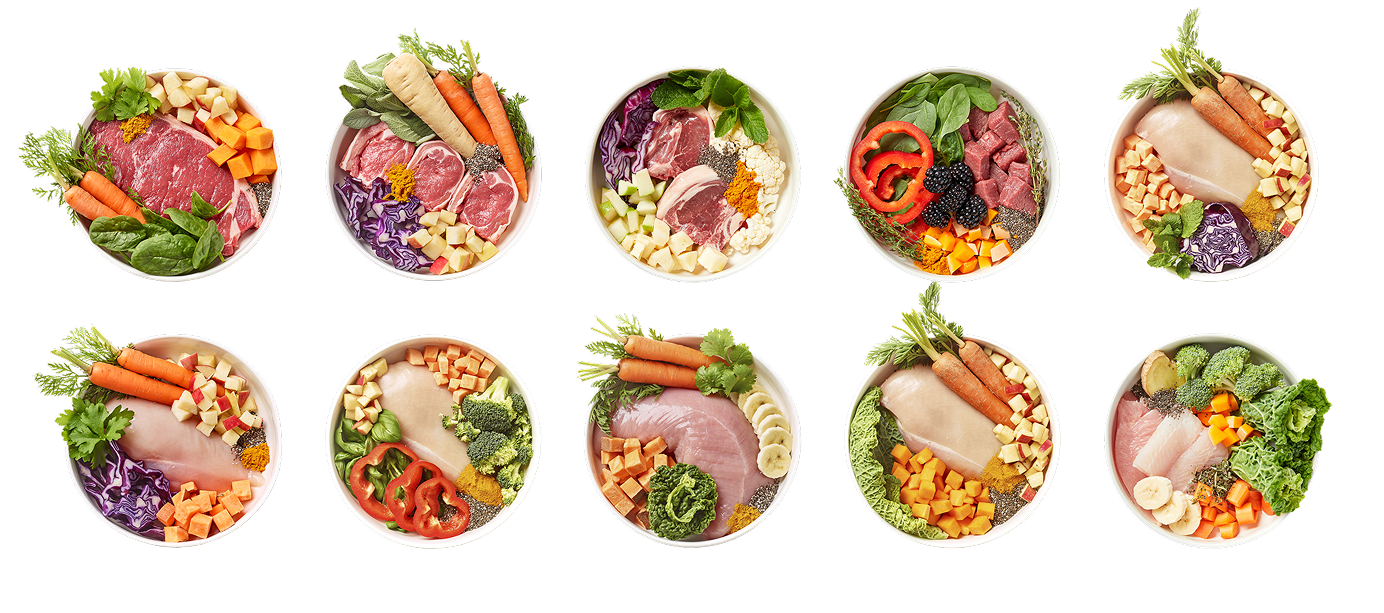
With 13 hand-cooked recipes featuring 7 different protein sources to choose from, there's something for everyone.

With 13 hand-cooked recipes featuring 7 different protein sources to choose from, there's something for everyone.

